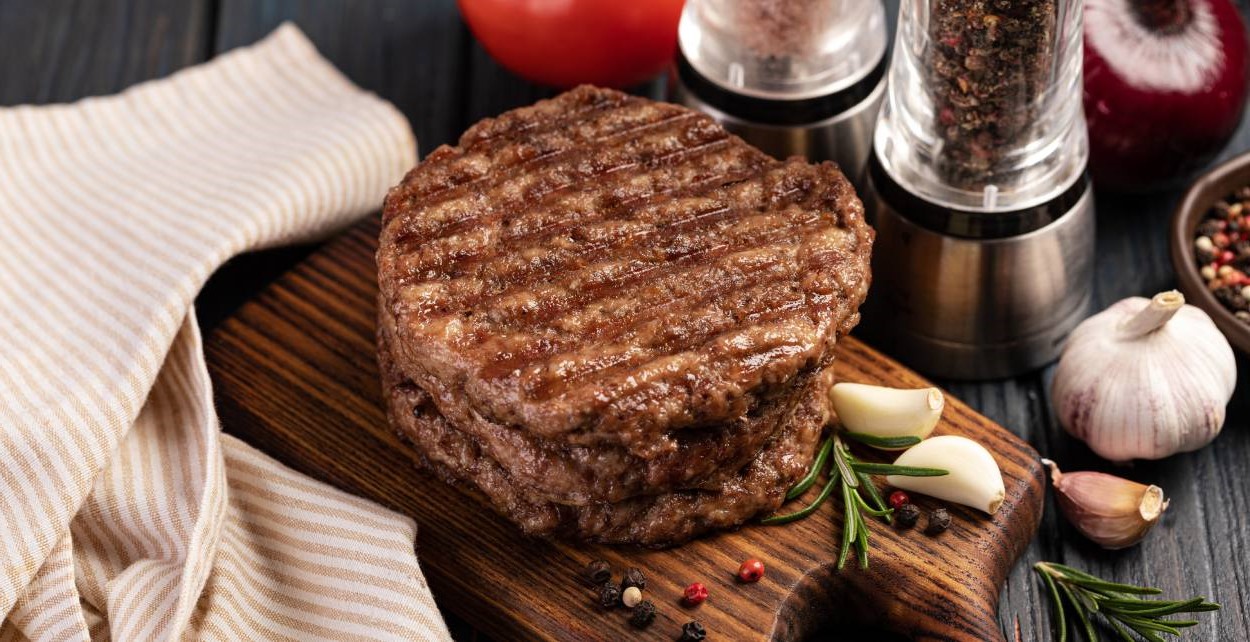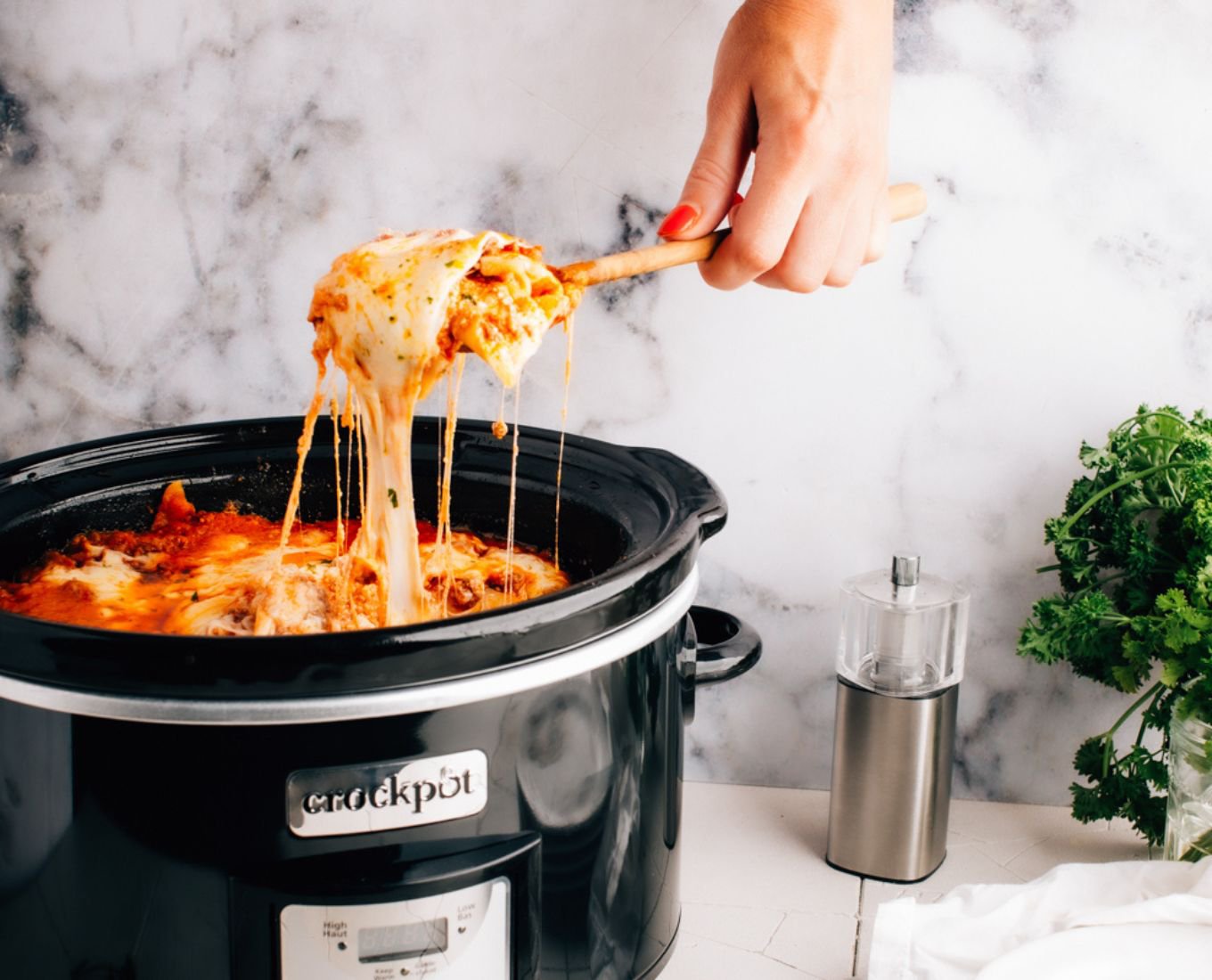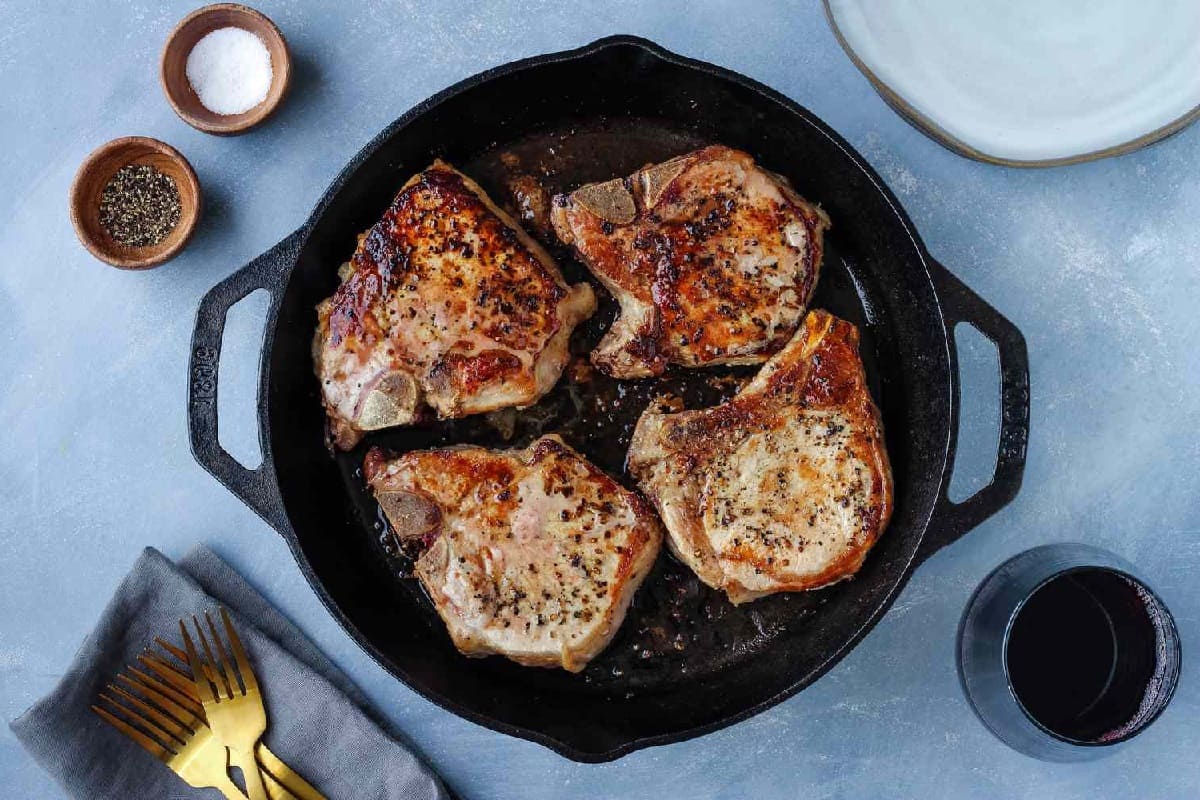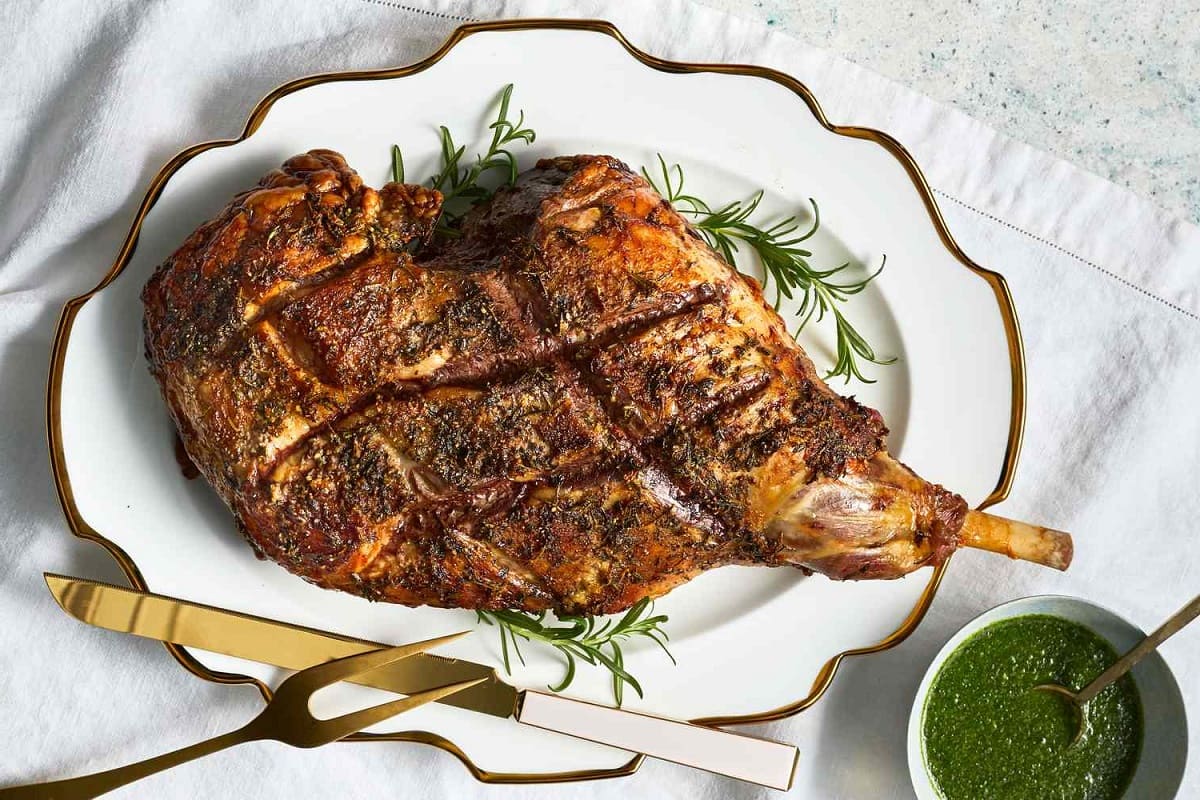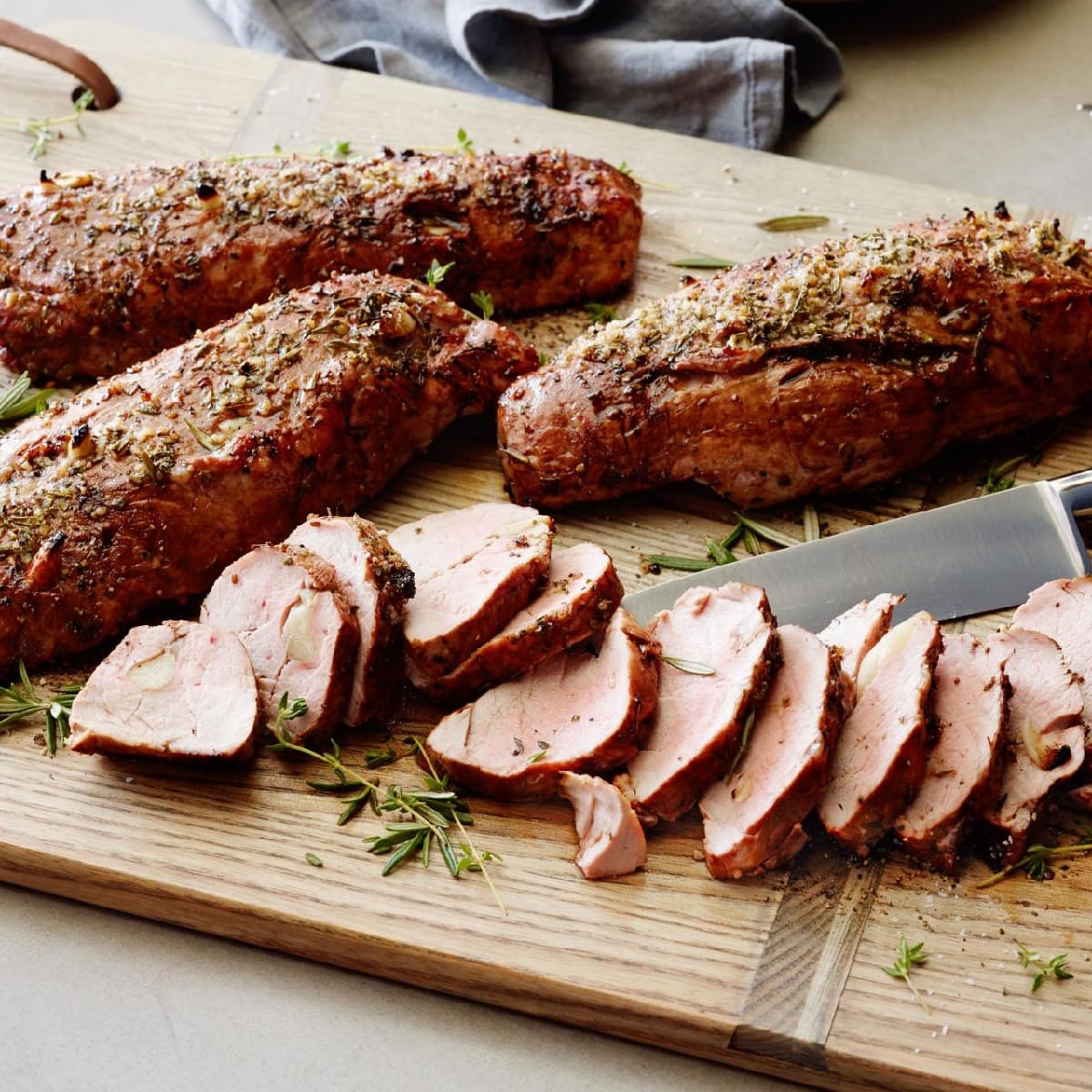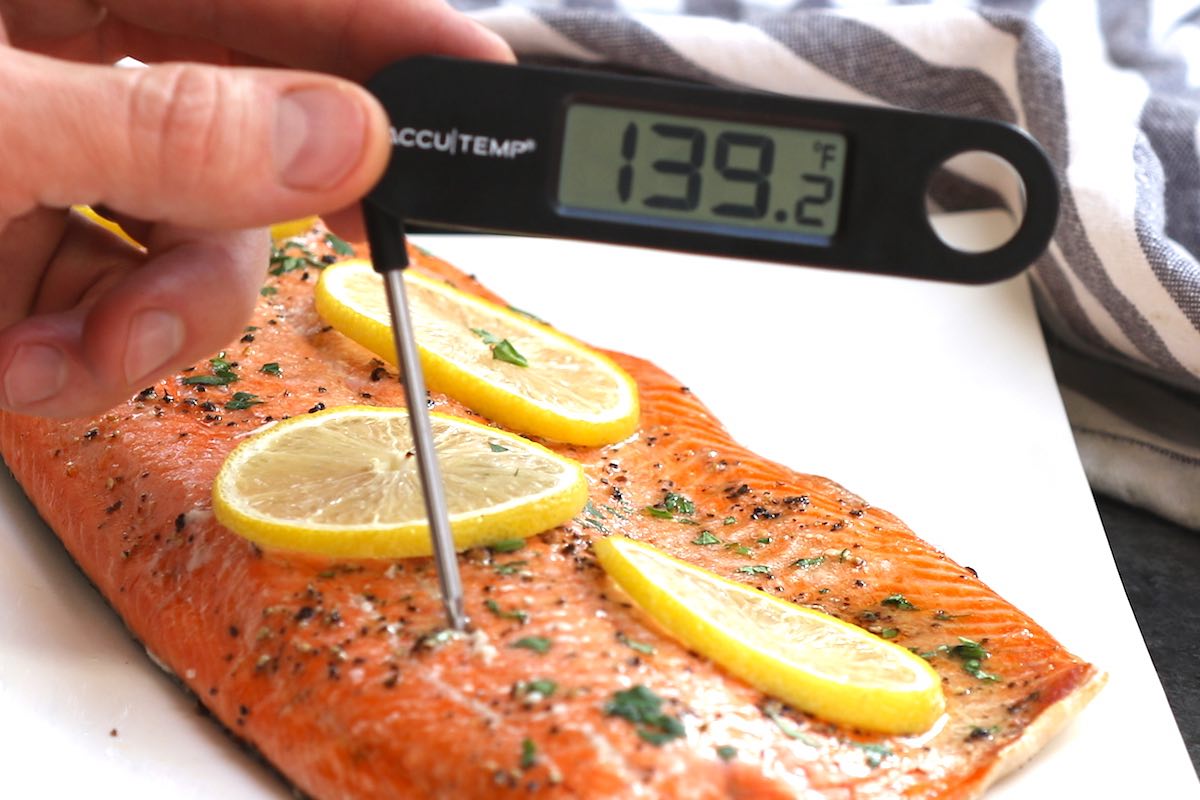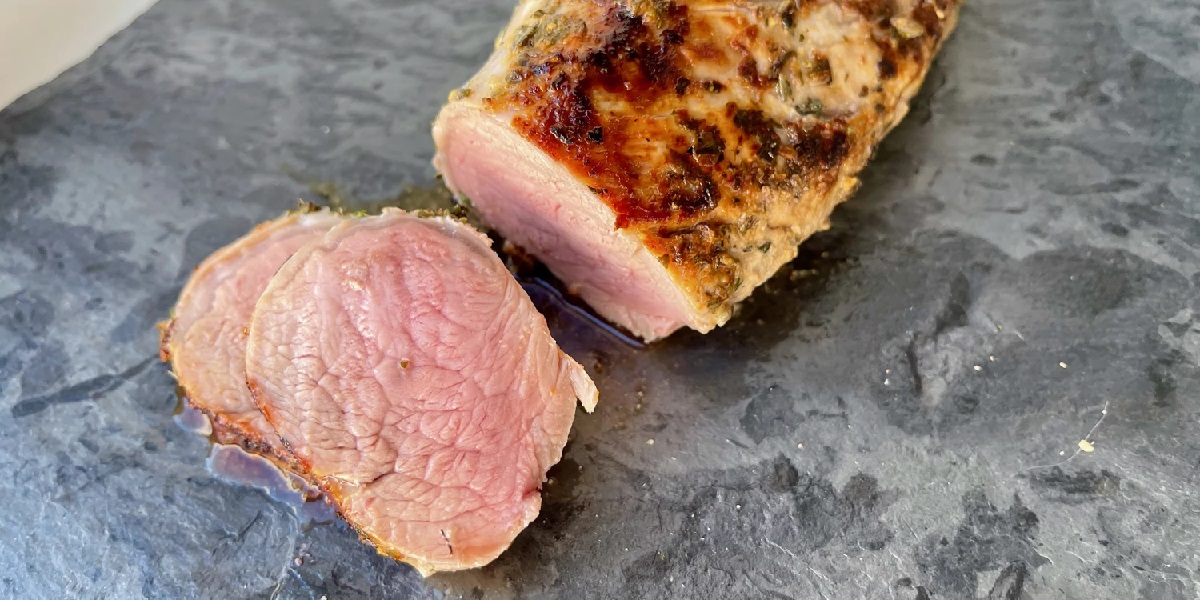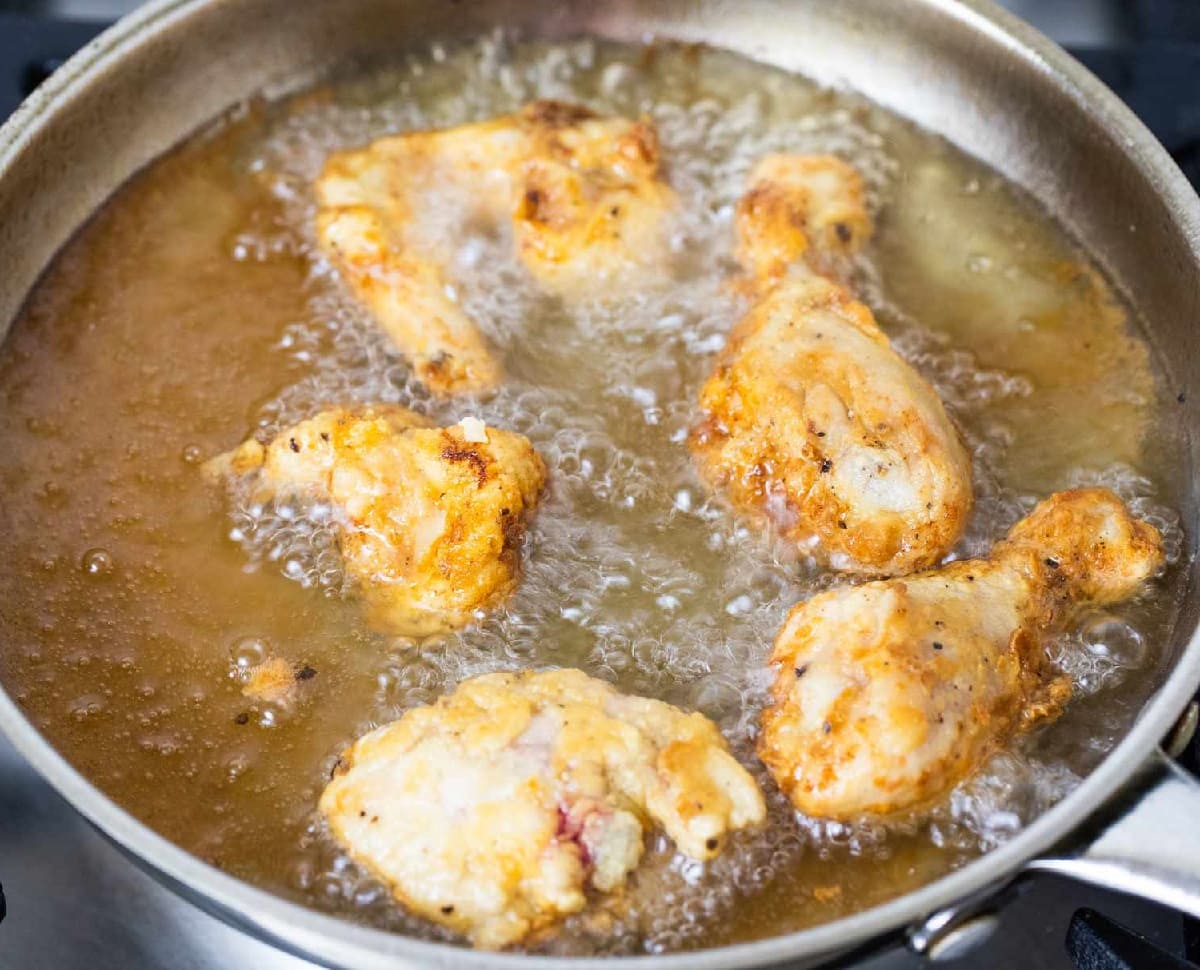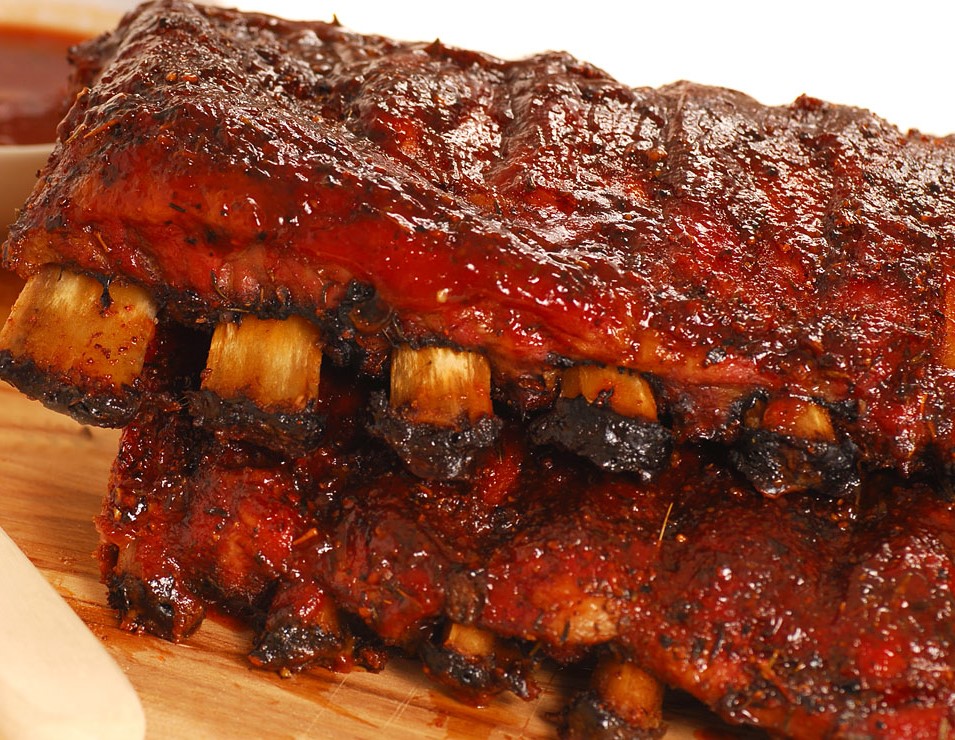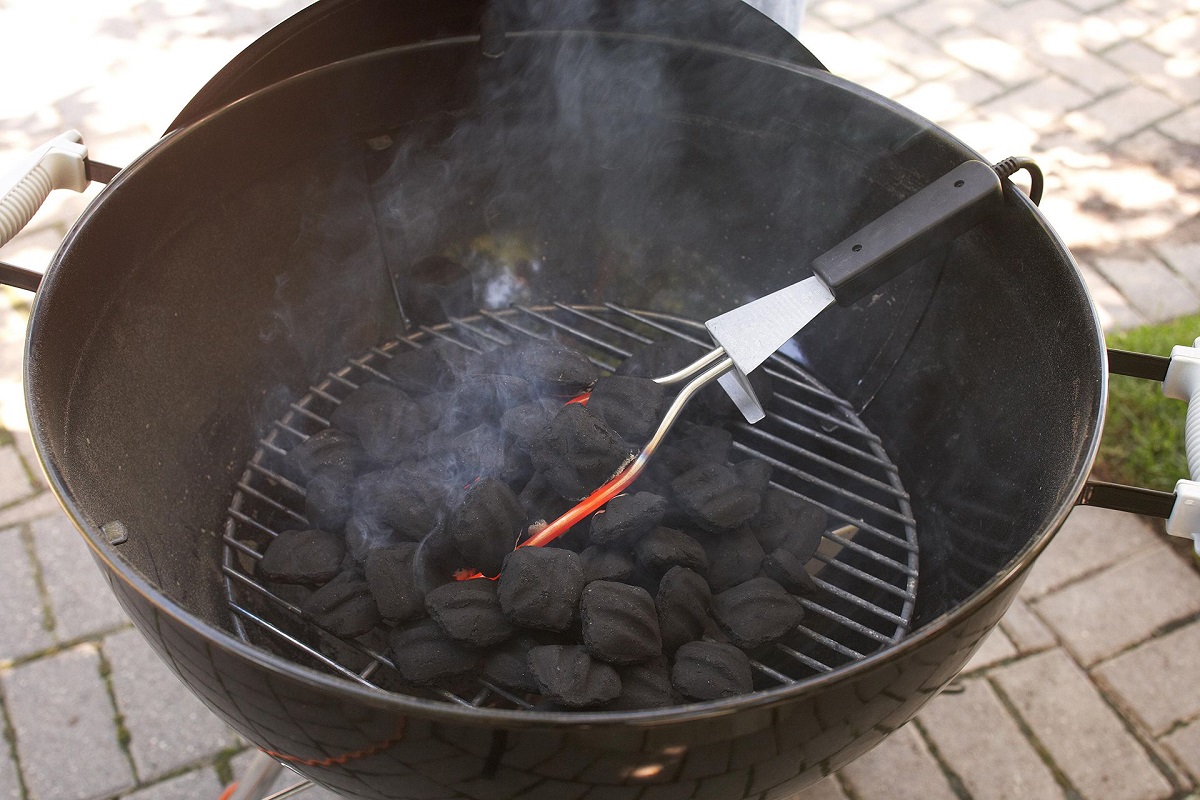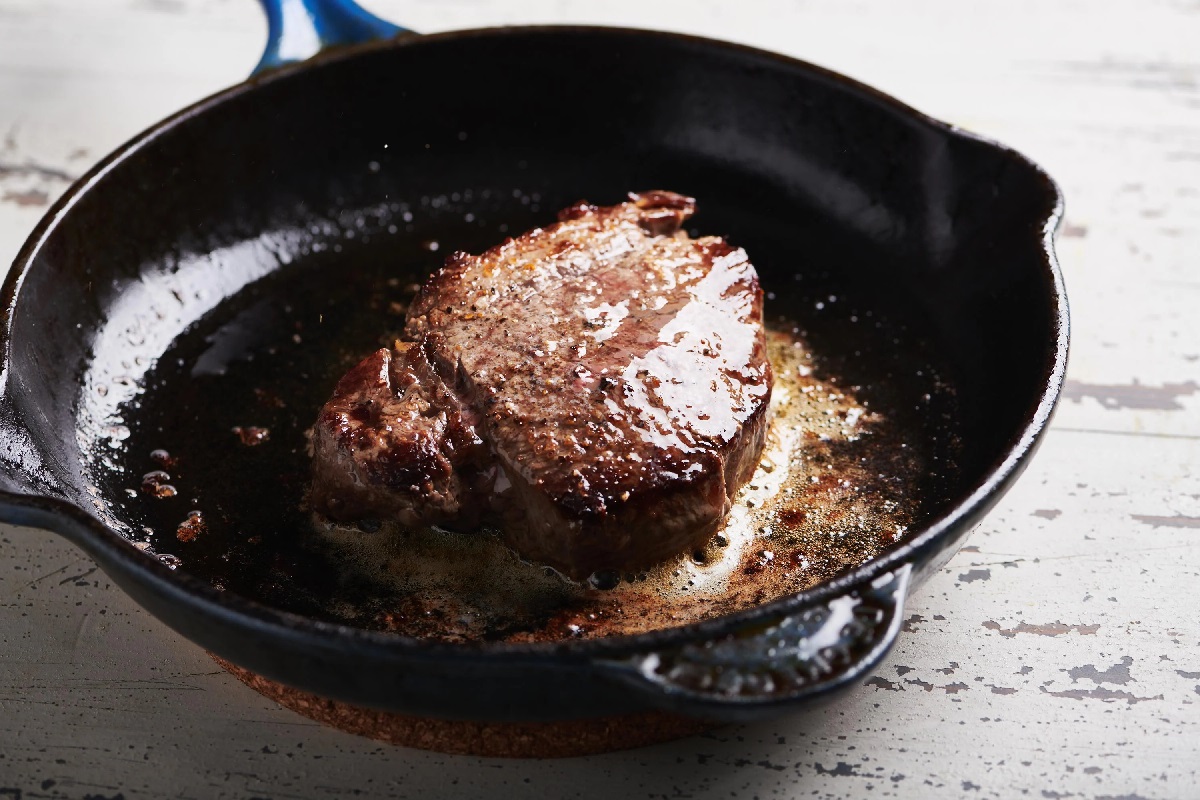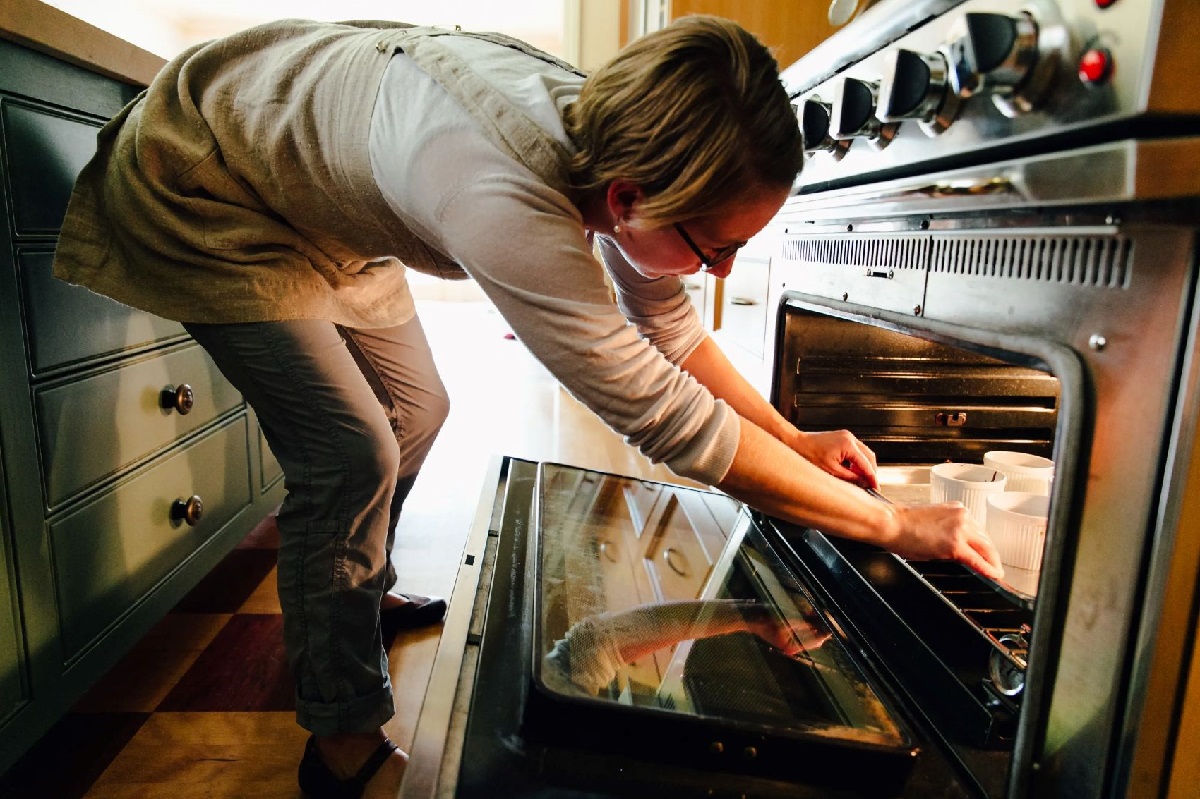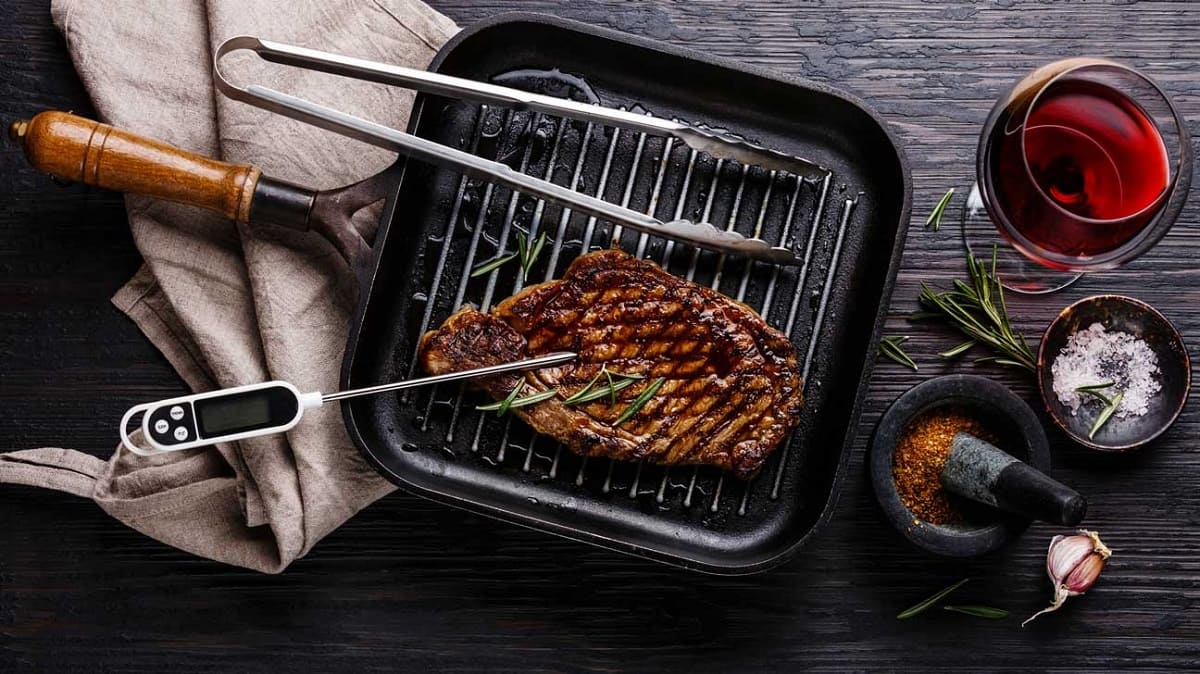Home>Culinary & Beverages>Optimal Temperature For Cooking Hamburgers
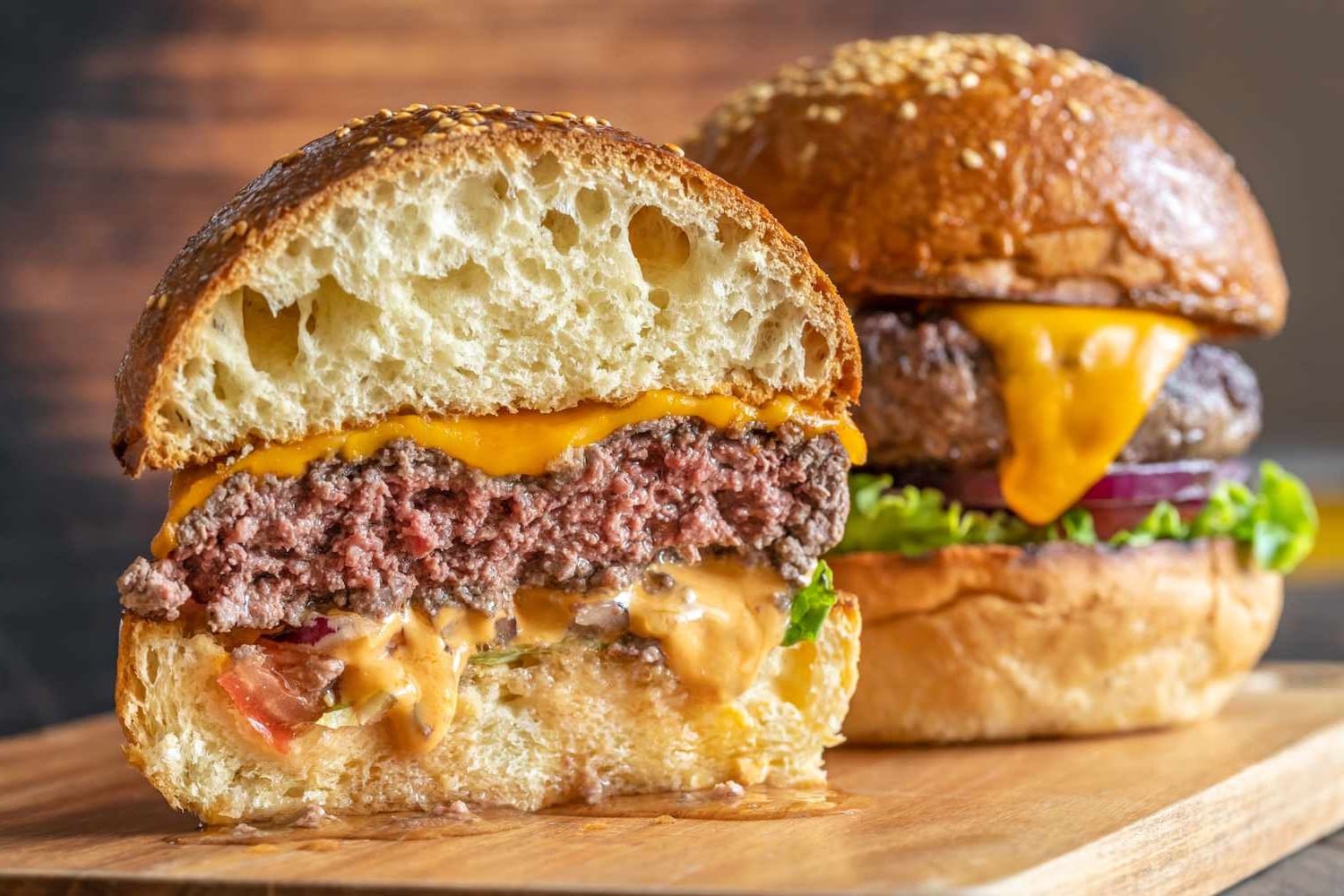

Culinary & Beverages
Optimal Temperature For Cooking Hamburgers
Published: February 21, 2024
Discover the ideal cooking temperature for juicy, flavorful hamburgers. Learn expert tips and techniques in culinary and beverages. Elevate your burger game today!
(Many of the links in this article redirect to a specific reviewed product. Your purchase of these products through affiliate links helps to generate commission for Temperatures.com, at no extra cost. Learn more)
Table of Contents
Introduction
Cooking hamburgers to perfection involves more than just flipping patties on a hot grill or sizzling them in a pan. Achieving the ideal temperature is crucial to ensuring that your burgers are not only safe to eat but also juicy and flavorful. The optimal cooking temperature for hamburgers is a topic that garners much attention in the culinary world, as it directly impacts the taste, texture, and overall dining experience.
Understanding the science behind cooking temperatures is essential for anyone who wants to master the art of preparing mouthwatering burgers. Factors such as the type of meat, desired level of doneness, and cooking method all play a significant role in determining the ideal temperature for cooking hamburgers. By delving into these factors and exploring the effects of different cooking temperatures, we can uncover the secrets to creating the perfect burger every time.
Cooking hamburgers is not just a culinary task; it's an opportunity to elevate a simple dish into a gourmet experience. Whether you prefer your burgers rare, medium-rare, medium, or well-done, the cooking temperature directly influences the outcome. By understanding the nuances of cooking temperatures, you can tailor your burgers to suit your personal preferences and delight the palates of your guests.
In this article, we will delve into the various factors that influence the optimal cooking temperature for hamburgers. From the recommended internal temperature for safe consumption to the effects of different cooking temperatures on the texture and flavor of the meat, we will explore the science behind achieving burger perfection. Additionally, we will provide valuable tips for ensuring that your burgers reach the optimal temperature while retaining their juiciness and succulence.
Join us on a journey through the world of burger temperatures, where we uncover the secrets to creating burgers that are not only safe to eat but also bursting with flavor and cooked to perfection. Let's embark on this culinary exploration and unlock the key to achieving the ultimate burger experience.
Factors Affecting Cooking Temperature
The optimal cooking temperature for hamburgers is influenced by several key factors that significantly impact the outcome of the cooking process. Understanding these factors is essential for achieving the perfect balance of flavor, juiciness, and safety in every burger.
-
Type of Meat: The type of meat used in the burger patty plays a crucial role in determining the ideal cooking temperature. Ground beef is the most common choice for hamburgers, and its fat content directly affects the cooking process. Leaner cuts of ground beef require careful monitoring to prevent overcooking, as they can quickly become dry and tough. On the other hand, fattier blends of ground beef can withstand higher cooking temperatures without sacrificing juiciness.
-
Desired Level of Doneness: Personal preferences for the level of doneness greatly influence the cooking temperature. Whether you prefer a rare, medium-rare, medium, or well-done burger, the internal temperature of the patty must align with the desired level of doneness. Achieving the perfect balance between a juicy interior and a flavorful crust on the exterior hinges on cooking the patty to the appropriate temperature.
-
Cooking Method: The method of cooking, whether grilling, pan-searing, or broiling, impacts the temperature at which the burger is cooked. Each method requires a nuanced approach to temperature control to ensure that the patty cooks evenly and retains its moisture. Grilling over an open flame imparts a distinct smoky flavor and requires careful attention to prevent charring, while pan-searing allows for precise temperature regulation to achieve a perfect sear.
-
Thickness of the Patty: The thickness of the burger patty affects the cooking time and, consequently, the cooking temperature. Thicker patties necessitate lower and slower cooking to ensure that the interior reaches the desired temperature without burning the exterior. Conversely, thinner patties cook more quickly and require higher temperatures to achieve the ideal level of doneness without drying out.
-
Resting Period: Allowing the cooked burger patty to rest before serving is a critical factor in ensuring that the juices redistribute evenly, resulting in a moist and succulent burger. The resting period impacts the final serving temperature, as the residual heat continues to gently cook the patty while the juices settle, contributing to a perfectly cooked burger.
By considering these factors, you can tailor the cooking temperature to suit your preferences and create hamburgers that are not only safe to eat but also bursting with flavor and cooked to perfection. Understanding the interplay of these factors empowers you to master the art of cooking hamburgers to the ideal temperature, elevating this classic dish to a culinary masterpiece.
Recommended Internal Temperature for Hamburgers
The recommended internal temperature for hamburgers is a critical aspect of ensuring food safety and optimal flavor. Achieving the ideal internal temperature is essential to eliminate harmful bacteria while preserving the juiciness and tenderness of the meat. The United States Department of Agriculture (USDA) provides guidelines for safe cooking temperatures, offering a reliable reference for achieving the perfect burger.
For ground beef patties, the USDA recommends cooking to an internal temperature of 160°F (71°C) to ensure that any harmful bacteria, such as E. coli and Salmonella, are effectively destroyed. This temperature threshold guarantees the safety of the meat, making it safe for consumption without compromising its palatability. However, it's important to note that achieving this temperature does not necessarily mean sacrificing a juicy and flavorful burger.
While the USDA's recommended temperature ensures food safety, it's also essential to consider the desired level of doneness when cooking hamburgers. For those who prefer a rare or medium-rare burger, achieving an internal temperature of 130-140°F (54-60°C) is sufficient to maintain a pink and juicy center. However, it's crucial to source high-quality, fresh ground beef from a reputable supplier to minimize the risk of foodborne illness when opting for lower cooking temperatures.
When using ground poultry, including turkey or chicken, the recommended internal temperature increases to 165°F (74°C) to ensure the thorough elimination of any harmful pathogens. Poultry requires higher cooking temperatures due to the increased risk of bacterial contamination, making it crucial to adhere to the USDA guidelines for safe consumption.
It's important to use a reliable meat thermometer to accurately gauge the internal temperature of the burger, as visual cues alone may not provide an accurate indication of doneness. Insert the thermometer into the thickest part of the patty, avoiding contact with bone, fat, or gristle, to obtain an accurate reading.
By adhering to the recommended internal temperatures for hamburgers, you can ensure that your burgers are not only safe to eat but also succulent and bursting with flavor. Understanding the significance of internal temperatures in the cooking process empowers you to create burgers that are both delicious and safe for consumption, elevating the dining experience to new heights.
Effects of Different Cooking Temperatures
The effects of different cooking temperatures on hamburgers are profound, influencing not only the safety of consumption but also the texture, juiciness, and overall flavor of the meat. Understanding how varying temperatures impact the cooking process is essential for achieving the perfect burger tailored to individual preferences.
Low Cooking Temperatures (Rare to Medium-Rare)
Cooking hamburgers at lower temperatures, typically ranging from rare to medium-rare, results in a pink or reddish interior with a juicy and tender texture. The lower heat allows the meat to retain more moisture, preserving its natural succulence and tenderness. For those who prefer their burgers on the rarer side, cooking to an internal temperature of 130-140°F (54-60°C) achieves the desired level of doneness while maintaining a delicate and flavorful center.
Read more: Optimal Temperature For A Medium Rare Steak
Medium Cooking Temperatures
At medium cooking temperatures, the internal temperature of the burger reaches approximately 140-155°F (60-68°C), resulting in a slightly pink center with enhanced firmness. This level of doneness offers a balance between tenderness and a more substantial texture, appealing to a broader range of palates. The burger remains juicy while exhibiting a more pronounced sear on the exterior, contributing to a rich and savory flavor profile.
High Cooking Temperatures (Medium-Well to Well-Done)
Cooking hamburgers at higher temperatures, reaching an internal temperature of 160°F (71°C) and above, yields a well-done burger with a fully cooked and firm texture. While well-done burgers lack the pink center associated with rarer preparations, they offer a robust and caramelized crust, intensifying the savory notes of the meat. However, achieving a well-done burger without sacrificing juiciness requires careful attention to prevent overcooking, as prolonged exposure to high heat can result in dryness.
Impact on Flavor and Texture
The cooking temperature directly influences the flavor and texture of the burger, with lower temperatures preserving more moisture and tenderness, while higher temperatures contribute to a more substantial and caramelized exterior. Additionally, the Maillard reaction, responsible for creating the desirable crust on the burger, occurs more prominently at higher temperatures, enhancing the overall flavor profile.
By understanding the effects of different cooking temperatures, individuals can tailor their burgers to suit their preferences, whether they favor a rare, medium, or well-done burger. The interplay of temperature and doneness allows for a diverse range of culinary experiences, each offering a unique combination of juiciness, tenderness, and flavor.
This comprehensive exploration of the effects of different cooking temperatures provides valuable insights into the nuances of burger preparation, empowering individuals to create burgers that are not only safe to eat but also tailored to their desired level of doneness and bursting with flavor.
Tips for Achieving the Optimal Cooking Temperature
-
Use a Meat Thermometer: Investing in a reliable meat thermometer is essential for accurately gauging the internal temperature of the burger. This ensures that the patty reaches the recommended temperature for safe consumption while avoiding overcooking, which can result in dryness.
-
Preheat the Cooking Surface: Whether grilling or pan-searing, preheating the cooking surface is crucial for achieving the optimal cooking temperature. A hot surface promotes even cooking and allows for the development of a flavorful crust without prolonged exposure to heat.
-
Monitor Cooking Time: Keeping track of the cooking time is vital, especially when using high heat. Thicker patties require longer cooking times at lower temperatures to ensure that the interior reaches the desired doneness without burning the exterior.
-
Rest the Patties: Allowing the cooked burger patties to rest before serving is a critical step in achieving the optimal temperature. The resting period allows the juices to redistribute, resulting in a moist and succulent burger.
-
Select the Right Meat Blend: Choosing the appropriate blend of ground beef is essential for achieving the optimal cooking temperature. Leaner cuts require careful monitoring to prevent overcooking, while fattier blends can withstand higher temperatures without sacrificing juiciness.
-
Adjust Cooking Method for Thickness: Tailoring the cooking method to the thickness of the patty is crucial. Thicker patties benefit from lower and slower cooking to ensure that the interior cooks evenly, while thinner patties require higher temperatures for efficient cooking without drying out.
-
Consider Carryover Cooking: Understanding the concept of carryover cooking, where the residual heat continues to cook the patty after it is removed from the heat source, is essential for achieving the perfect temperature. Factoring in carryover cooking helps prevent overcooking and ensures that the burger reaches the desired level of doneness.
-
Practice Temperature Testing: Regularly testing the cooking temperature of the grill or cooking surface helps maintain consistent heat levels, ensuring that the burgers cook evenly and reach the optimal internal temperature.
By implementing these tips, individuals can elevate their burger-cooking skills, ensuring that each patty reaches the optimal temperature for safe consumption while retaining its juiciness and flavor. Mastering the art of achieving the ideal cooking temperature empowers individuals to create burgers that are not only safe to eat but also a delight to savor, enhancing the overall dining experience.
Read more: Optimal Internal Temperature For Meatloaf
Conclusion
Mastering the art of cooking hamburgers to the optimal temperature is a culinary journey that encompasses both science and art. By delving into the factors that influence cooking temperature, understanding the recommended internal temperatures, exploring the effects of different cooking temperatures, and implementing valuable tips, individuals can elevate their burger-cooking skills to new heights.
The interplay of factors such as the type of meat, desired level of doneness, cooking method, patty thickness, and resting period provides a comprehensive framework for achieving the perfect burger. Understanding how these elements converge to influence the cooking temperature empowers individuals to tailor their burgers to suit their preferences, whether they favor a rare, medium-rare, medium, or well-done burger.
Adhering to the recommended internal temperatures for ground beef and poultry ensures that burgers are not only safe to eat but also succulent and bursting with flavor. The meticulous use of a meat thermometer, coupled with an understanding of carryover cooking, allows for precise temperature control, resulting in burgers that are cooked to perfection without compromising their juiciness and tenderness.
The effects of different cooking temperatures on the texture, juiciness, and flavor of the meat offer a diverse range of culinary experiences, each catering to individual palates. Whether savoring a rare burger with a delicate pink center or relishing a well-done burger with a robust and caramelized crust, the nuances of cooking temperatures enrich the dining experience, offering a symphony of flavors and textures.
Incorporating essential tips, such as preheating the cooking surface, monitoring cooking time, and selecting the right meat blend, equips individuals with the knowledge and skills to consistently achieve the optimal cooking temperature for hamburgers. By implementing these tips, individuals can create burgers that are not only safe to eat but also a delight to savor, enhancing the overall dining experience.
Ultimately, the quest for the optimal cooking temperature for hamburgers transcends the mere act of preparing a meal; it embodies the pursuit of culinary excellence and the creation of memorable dining experiences. By unraveling the secrets of achieving the perfect burger, individuals can embark on a flavorful and rewarding culinary adventure, where each bite is a testament to their mastery of the art of burger preparation.
